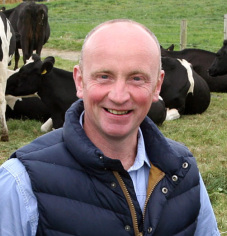15 June 2022
Grass10 Newsletter – 14th June 2022

Tuesday 14th June marked the 200th Edition of the Grass10 newsletter. The Grass10 newsletter has evolved significantly since the 1st edition in 2018. Watch the 200th Edition Video to get farmer reaction. This week get the regular updates, weekly checklist Featured farmer, Clover reporter & more
200th Edition – 14th June 2022

Tuesday 14th June marks the 200th Edition of the Grass10 newsletter. The Grass10 newsletter has evolved significantly since the 1st edition in 2018 & there is nothing else like it for farmers involved in grassland management, which is the cornerstone for profitable livestock systems in Ireland.
On behalf of the Grass10 team we would like to thank you for your continued readership of our newsletter.
Watch the video below to hear how the Grass10 Newsletter is helping farmers achieve excellence in grazing management.




Grass10 Weekly Tips
Grass growth matching demand on most farms
Grass growth is slightly ahead of demand on both dairy and drystock farms on average across the country. This indicates most farms can continue as they are for this week. However, some farms have been affected by soil moisture deficit plus other factors, and with little rain forecast in these areas, growth is likely to be restricted on some farms, so remember to keep AFC > 550 KgDM/ha and hold a 20-25 day rotation, and don’t let pregrazing yield go below 1,100 KgDM/ha. Letting AFC go below this will exacerbate the problem. Continue to walk the farm and match demand to the growth, i.e. growth 48 KgDM/ha per day with stocking rate 3.5 LU/ha means 13.5 KgDM grass can be fed per LU (48/3.5= 13.5), total intake will be around 18 KgDM/LU. Look at making more ground available for grazing or increasing supplement to reduce demand and fill the deficit.
Review grazing rotations and grass yied
Farms aiming to achieve the Grass10 targets of growing 14 T DM/ha and reaching 10 grazings per paddock should check their PastureBase accounts to review their grazing rotations and annual tonnage to date. It has been 60 days since early April meaning many farms should have completed 4 rotations (1 in spring plus 3 x 20-day rotations), and be on the 5th rotation now. Over the same rotations, paddocks should have between 5.0-5.5 T DM/ha grown. You can access this information by opening the ‘Reports’ tab on the left hand menu and click into ‘Annual Tonnage’. You can filter dates and number of measurements at the top to compare different years. Ensure silage yields have been added to paddocks. Aim to get another 3 grazing rotations over the next 60 days to bring you up to early-mid August.
Grass dry matters are high across the country
The drying conditions and lack of rainfall in most southern areas has caused a big increase in dry matter in the past week. Be careful not to underestimate covers on paddocks. An increase from 16% DM to 19% DM is nearly 20% more grass in a paddock. So a cover estimated at 1,100 could have 1,300 KgDM/ha, and 10 days ahead could really be 12 days ahead. Grass utilisation should be high at over 90% as grazing conditions are excellent. Do not increase supplement and leave grass behind in paddocks, it defeats the purpose. Allocate grass using the grazing calculator on PBI to help control this.
Consider spreading Sulphur on paddocks this June
Sulphur is an important to improve nitrogen use efficiency and therefore, growing more grass. During dry weather sulphur availability to the grass plant becomes even more important. While most farms have some Sulphur applied (from slurry and fertiliser), from communication with farmers the amount applied is lower on some farms and a lower number have little applied. Farmers should ideally apply a high-sulphur based fertiliser to paddocks as soon as possible.
Grass10 Featured Farmer
 Denise Weeks, Co. Limerick
Denise Weeks, Co. Limerick
Denise Weeks farms in partnership with her parents Pat & Olive in Kilfinane, Co. Limerick. She is milking 192 cows on 68 Ha. Denise has oversown clover & sown a red clover silage mix over the last 6 weeks.
Click below to read her profile


 Jim White, Co. Tipperary
Jim White, Co. Tipperary
This section will give weekly reports and videos from farmers who have a lot of clover established on their farms.
This week, dairy farmer Jim White explains why he thinks getting light to the clover plant is key for establishment.

The Teagasc Sheep Open Day will take place this Saturday 18th June at 10 am. Take the opportunity to review the latest research and technical advice from the Teagasc Sheep programme and its practical application at farm level. The grassland focus will be on clover incorporation and grassland management to maximise growth while also looking at fertiliser costs and silage budgets.
Click below for further information.

Sign up for weekly grass 10 newsletter



